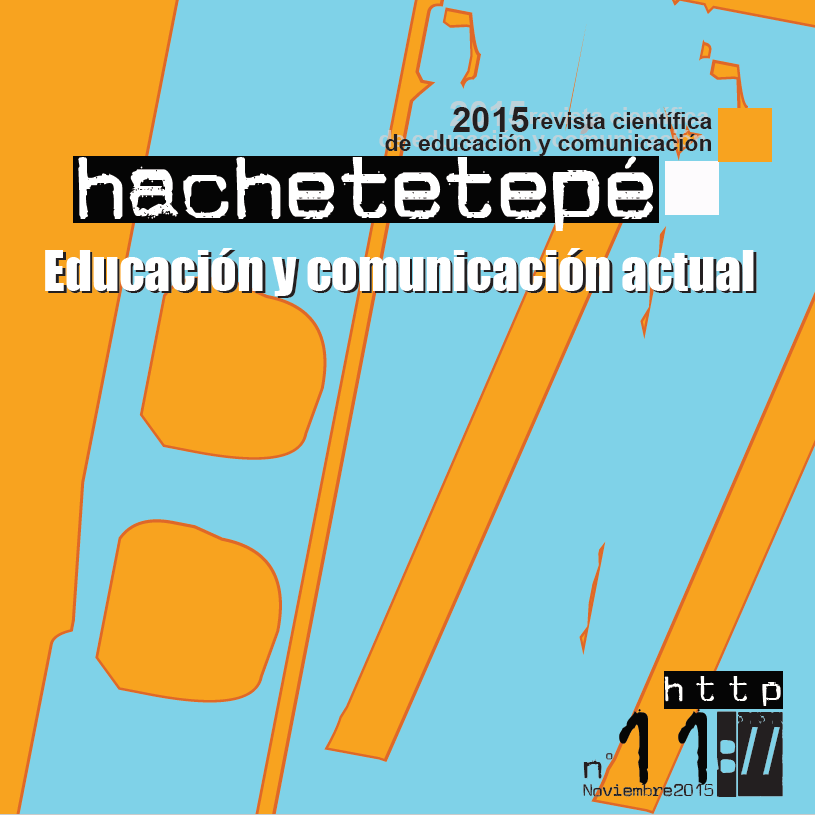New landscapes for 21 st. Century’s teacher training. PLE and design of training’s action
Abstract
The purpose of this paper is to provide a guidance to the design and production of training material to instruction at university teachers based at research "Design, production and evaluation of a learning environment 2.0 for training university teachers in the educational use of Information Technology and Communication "(DIPRO 2.0) (Edu2009-08893) awarded by the Ministry of Science and Innovation whose main objective is to investigate and study the Personal Learning Environments (PLE, thereon) impact at learning and teaching educational training more specifically to develop technological capabilities of faculty and the Information Technology and Communication Technologies (ICT, thereon) incorporation at university.
Keywords
Downloads
How to Cite
License

This work is licensed under a Creative Commons Attribution-NonCommercial-NoDerivatives 4.0 International License.
Those authors who have published with this journal, accept the following terms:
- They will retain their copyright and guarantee the journal the right to first publication of their work, which will simultaneously be subject to the Creative Commons Attribution License . They may be copied, used, disseminated, transmitted and publicly displayed, provided that the authorship, url, and magazine are cited, and are not used for commercial purposes. No derivative works are allowed.
- They may adopt other non-exclusive license agreements for the distribution of the published version of the work (e.g., deposit it in an institutional telematic archive or publish it in a monographic volume) provided that the initial publication in this journal is indicated.
- Disseminate your work through the Internet (e.g., in institutional telematic archives or on your website) once the manuscript is accepted, which may lead to interesting exchanges and increased citations of the published work. (See The effect of open access).
Hachetetepé. Scientific journal of education and communication does not charge a fee for the submission of manuscripts or for the publication of its articles.
References
Adell, J. y Castañeda, L. (2010). Los Entornos Personales de Aprendizaje (PLEs): una nueva manera de entender el aprendizaje. En Roig Vila, R. & Fiorucci, M. (Eds.) Claves para la investigación en innovación y calidad educativas. La integración de las Tecnologías de la Información y la Comunicación y la Interculturalidad en las aulas. Stumenti di ricerca per l’innovaziones e la qualità in ámbito educativo. La Tecnologie dell’informazione e della Comunicaziones e l’interculturalità nella scuola. Alcoy: Marfil – Roma TRE Universita degli studi.
Amine, M. (2009). PLE. (http://cort.as/XfLa) (28/09/15)
Arenas, E (2008). Personal Learning Environments: Implications and Challenges. ( http://cort.as/XfM-) (28/09/15)
Arrizabalaga, P.; Monguet, J. M. y Ferruzca, M. (2010). Supporting the Online Tutoring Process through a Personalized Learning Environments. The PLE Conference, Barcelona. (http://cort.as/XfOB) (28/09/15)
Attwell, G. (2007). The Personal Learning Environments - the future of eLearning? eLearning Papers, 2; 1.
Attwell, G. (2010). Supporting Personal Learning in the Workplace. (http://cort.as/XfON) (28/09/15)
Bordas, I. y Cabrera, F. (2001). Estrategias de evaluación de los aprendizajes centrados en el proceso. (http://cort.as/XjUs) (28/09/15)
Brown, S. (2010). From VLEs to learning webs: the implications of Web 2.0 for learning and teaching. Interactive Learning Environments, 18, 1; 1–10.
Cabero, J. y Gisbert, M. (2005). La formación en Internet. Guía para el diseño de materiales didácticos. Sevilla: Eduforma.
Cabero, J. (2009). Educación 2.0 ¿marca, moda o nueva visión de la educación? En Castaño, C. (2009). Web 2.0. El uso de la Web en la sociedad del conocimiento. Caracas: Universidad Metropolitana.
Castañeda, L. (2012). Reflexiones sobre PLEs. Una mirada atrás antes de seguir caminando. (http://cort.as/XfNw) (28/09/15)
Downes, S. (2007). Learning Networks in Practice. BECTA. Emerging Technologies for Learning. (http://cort.as/XfOb) (27/09/15)
Ivanova, M. (2009). From personal learning environment building to professional learning network forming. Paper presented at the 5th International Scientific Conference E-learning and Software for
Education. (http://cort.as/XfOk) (28/09/15)
Llorente, M.C. (2008). Blended Learning para el aprendizaje en Nuevas Tecnologías aplicadas a la Educación: un estudio de casos. Tesis no publicada, Facultad de Ciencias de la Educación. Universidad de Sevilla.
Llorente, M.C. (2009). Formación semipresencial apoyada en la red (blended learning). Diseño de acciones para el aprendizaje. Sevilla: Eduforma.
Llorente, M.C. (2011). De la Web tradicional a la Web semántica: cambios y aplicación al ámbito educativo. Revista de Innovación Educativa, 14: 120-130.
Marín, V. y Cabero, J. (2010). Del conocimiento del estudiante universitario sobre las herramientas 2.0. Anales de la Universidad Metropolitana, 10, 2, 51-74.
Marín, V. y Reche, E. (2012). Universidad 2.0: Actitudes y aptitudes ante las TIC del alumnado de nuevo ingreso de la escuela universitaria de magisterio de la UCO. Pixel-Bit. Revista de Medios y Educación, 40; 197-211.
Salinas, J. (2009). Nuevas modalidades de formación: entre los entornos virtuales institucionales y los personales de aprendizaje. En Tejada, J. (cood). Estrategias de innovación en la formación para el trabajo. Madrid: Tornapunta ediciones; 209-224.
Schaffert, S. y Hilzensauer, W. (2008). On the way towards Personal Learning Environments: Seven crucial aspects. eLearning Papers, 9.
Whittaker, S. y Cann, A. (2010). Using Web 2.0 to Cultivate Information Literacy via Construction of Personal Learning Environments. Journal for Excellence in teaching and Learning. Vol.1.( http://cort.as/XfOz) (28/09/15)






